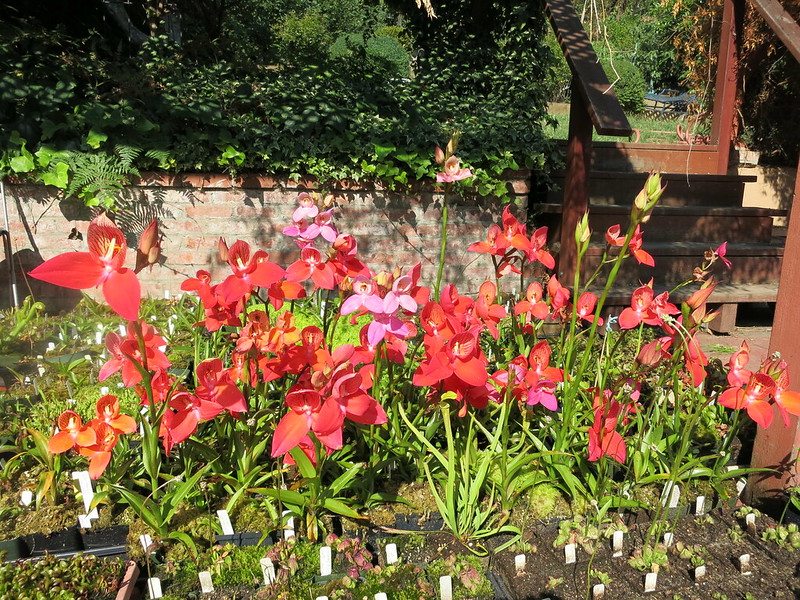It seems there are less and less people out there attempting to grow Disas these days. This is probably because they're tricky to really understand and grow year after year. Even experienced growers have their setback with disease outbreaks (mainly fungal) and can go from hundreds of plants to just dozens over a few grow seasons. After flowering, some plants just don't come back for various reasons.
No matter how many grow guides you read, nothing prepares you to grow these plants better than jumping into it and trying it yourself! I've grown Disas in weather where we had 116F (47C) for 2 weeks straight and they all survived! The key is, it always dropped to 65F (18C) at night and if the nights were in the low 70's (21C), the warm nights wouldn't last for more than a week.
In contrast, I've burned Disas grown in morning sun and afternoon shade, even when the temperature didn't go above 65F(18C), so finding the right balance of light and temperature takes a little trial and error. Interestingly, some clones can tolerate more sunlight than others.
While many out there explain that the #1 killer of Disa orchids is rot, they don't really mention some of the key reasons rot occurs. What I've observed is under optimal, cool temperatures, if the humidity is high and light is low, rot can be avoided if the plants aren't growing fast, medium is kept damp but not very wet, and the soil is very nutrient poor.
Even during times when we have low humidity, rot sets in if you fertilize to the point that the plant is growing strong and fast. It's very counter-intuitive:stressed out plants are more resistant than healthy, fast growing plants. As a grower, you want to get those plants as big and fat as possible yet avoid rot which can end it all.
Here's a photo of the height of my disa collection from the summer of 2013 when the collection rose to over a few hundred plants. They were transplanted and all were fed well in the fall, but then rot started during the winter rainy season so they were "starved" and the rot disappeared. This location had the best climate ever:it was at the bottom of a hill, got only morning direct sunlight, but diffused, afternoon light all year round, and it stayed relatively cool because cool air from the ocean seep into the area every night.

Challenge is, most of what bloomed didn't come back that fall, all the energy went into flowering and little went into replacing the plantlets. To top things off, we had a few days of mild frost in the winter of 2014, which wiped out about 70% of the plants.
I then moved to a new location that only gets morning sun and then pure afternoon shade. The plants adapted well, but because of the move, they weren't repotted, so many declined and perished by 2015 (this was the year my daughter was born, so plants were very neglected). By 2016, only a dozen or so pots were hanging on, and then some workers dumped top soil on the entire collection. A few plants perished, but I salvaged whatever was left and acquire a few more plants to get things going again. Some of my old, 'kill proof' clones had really nice sized tubers!
---------- Post added at 01:25 PM ---------- Previous post was at 01:23 PM ----------
Hmmm, I'm giving up, there's a lot more to this post that I wrote, but I lost it all from getting the error message regarding photo limits. Oh well....






























 Threaded Mode
Threaded Mode
